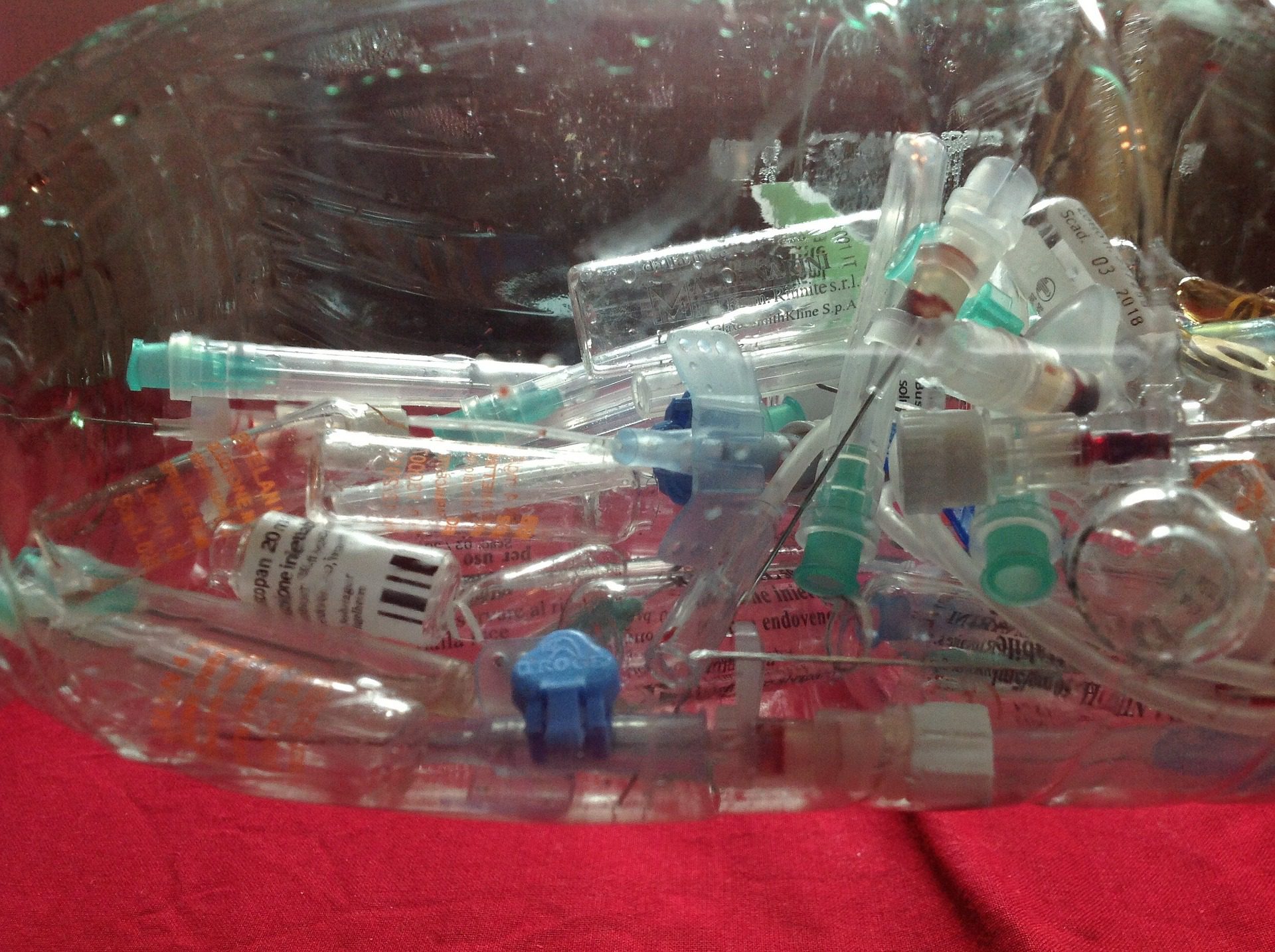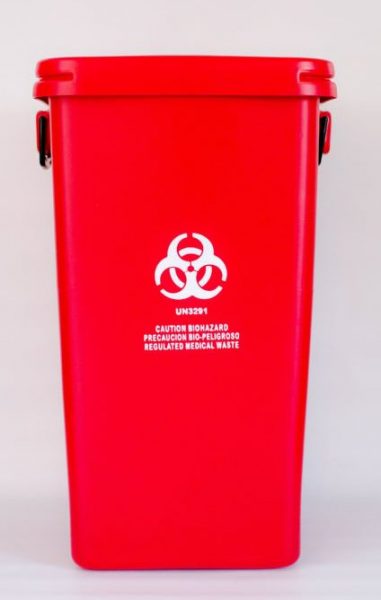Neighborhood Care: Smooth and Reliable Medical Waste Removal Near Me
Neighborhood Care: Smooth and Reliable Medical Waste Removal Near Me
Blog Article
Keep Ahead of Laws: Specialist Recommendations on Medical Garbage Disposal
In a world where the healthcare market is frequently evolving, it is imperative for medical facilities to stay in advance of regulations when it concerns the appropriate disposal of medical waste. With rigid standards and regular regulatory changes, it can be challenging to navigate the intricacies of this process. Nevertheless, with skilled advice, facilities can make sure conformity and alleviate dangers linked with incorrect garbage disposal. From comprehending the different categories of clinical waste to applying the best collection and partition approaches, this conversation will certainly provide useful insights and actionable tips to aid facilities stay in advance of policies in the ever-changing landscape of medical garbage disposal.
Comprehending Medical Waste Categories
Comprehending medical waste groups is necessary for proper disposal and administration in healthcare centers. Medical waste describes any waste created by healthcare tasks that may posture a risk to public wellness or the environment. It is critical to categorize clinical waste accurately to ensure its secure handling, transportation, treatment, and disposal.
There are numerous classifications of medical waste that healthcare facilities need to be aware of. One of the most common categories include contagious waste, pathological waste, sharps waste, pharmaceutical waste, and chemical waste. Each group has details standards and policies for its appropriate monitoring and disposal.
Infectious waste includes materials infected with blood or various other bodily fluids, such as gloves, dress, and lab cultures. Pathological waste refers to human tissues, organs, or body parts that require special delivery and disposal. Sharps waste includes utilized needles, syringes, and various other sharp things that can create injury and send infections. Pharmaceutical waste makes up run out, unused, or infected drugs that need careful handling and disposal. Chemical waste consists of solvents, anti-bacterials, and various other chemical compounds utilized in health care facilities.
Remaining Up-To-Date With Regulatory Adjustments
Staying current with regulatory changes is crucial for medical care centers to make certain conformity and proper monitoring of clinical waste disposal. medical waste removal services. With policies frequently progressing, it is vital for health care facilities to stay up-to-date to avoid fines, fines, and possible injury to the setting and public health and wellness
To remain in advance of regulatory adjustments, health care facilities should develop a system for monitoring and monitoring updates. This can be done by signing up for regulative newsletters, participating in workshops and meetings, and actively getting involved in industry organizations. Furthermore, centers ought to mark a team member or group in charge of staying notified and disseminating info to pertinent stakeholders.
Regular communication with regulative companies is also vital. Healthcare facilities need to develop relationships with regional, state, and government agencies to ensure they are mindful of any type of modifications in guidelines that might impact their waste administration methods. This can be done via regular conferences, engagement in public remark periods, and positive interaction with governing agencies.
In addition, health care centers ought to take into consideration partnering with waste management business that focus on medical garbage disposal (medical waste disposal services with WasteX). These business are often fluent in the most recent laws and can offer support and assistance to make sure conformity
Executing Appropriate Collection and Segregation Techniques
To efficiently manage medical waste disposal, health care facilities should establish correct collection and segregation approaches according to governing standards. Carrying out these techniques makes certain the secure handling and disposal of possibly unsafe products, secures the atmosphere, and lessens the danger of injuries and infections to medical care workers and the general public.
Proper collection and segregation techniques involve using designated containers and classifying systems. Medical care centers need to give plainly identified containers for different kinds of clinical waste, such as sharps, contagious waste, pharmaceutical waste, and non-hazardous waste. These containers must be color-coded and clearly marked to stay clear of complication and promote easy identification.
Additionally, medical care centers should educate their personnel on the right procedures for collecting and setting apart medical waste. This includes enlightening them on the different kinds of waste, the proper containers to utilize, and the significance of adhering to standards and regulations. Routine training sessions and refresher training courses ought to be conducted to make sure that team member stay updated on ideal methods.
Additionally, medical care facilities need to establish a system for routine collection and disposal of clinical waste. This may entail partnering with accredited waste management companies that concentrate on medical garbage disposal. These companies will make certain that the collected waste is transported and thrown away in compliance with regulatory requirements.
Picking the Right Disposal Methods

Incineration is just one of the most usual and reliable techniques for taking care of certain types of medical waste, such as pathological waste and sharps. It entails the regulated burning of waste at heats, decreasing it to ash. Incineration can launch dangerous toxins into the air and contribute to air pollution.

Other disposal approaches include chemical therapy, microwave treatment, and landfilling. Chemical therapy involves the usage of chemicals to disinfect and reduce the effects of the waste. Microwave therapy uses microwave power to heat and sanitize the waste. Landfilling involves burying the waste in an assigned landfill area (medical waste disposal services with WasteX). Landfilling should be the last resort due to the potential risk of contamination to soil and groundwater.
Guaranteeing Compliance Through Documentation and Training
After thoroughly considering the suitable disposal methods for medical waste, healthcare centers have to make certain compliance with policies and minimize environmental influence by applying reliable paperwork and training procedures. This step is important in maintaining a secure and sustainable environment for both healthcare employees and the public.

Healthcare workers who handle medical waste should obtain ideal training on waste segregation, managing, and disposal procedures. By offering extensive training, healthcare facilities can encourage their team to make enlightened choices and lessen the danger of incorrect waste disposal.
Conclusion
To conclude, remaining in advance of guidelines in clinical garbage disposal is critical for medical care centers. medical waste removal service. Understanding the various groups of clinical waste, staying updated with regulatory changes, applying appropriate collection and partition techniques, choosing the ideal disposal techniques, and guaranteeing compliance via paperwork and training are all necessary steps. By following these standards, healthcare companies can effectively take care of and get rid of of medical waste in medical waste disposal services with WasteX a secure and responsible fashion
From understanding the various classifications of clinical waste to executing the appropriate collection and segregation approaches, this discussion will give important understandings and actionable ideas to aid facilities remain in advance of policies in the ever-changing landscape of clinical waste disposal. - medical waste disposal services with WasteX
The most typical groups consist of contagious waste, pathological waste, Resources sharps waste, pharmaceutical waste, and chemical waste. Healthcare facilities need to give plainly classified containers for various kinds of clinical waste, such as sharps, infectious waste, pharmaceutical waste, and non-hazardous waste. Health care centers must establish a comprehensive system to record and track all facets of medical waste disposal, including kinds of waste produced, quantities, and disposal techniques utilized. Health care workers that manage clinical waste must receive appropriate training on waste segregation, handling, and disposal treatments.
Report this page